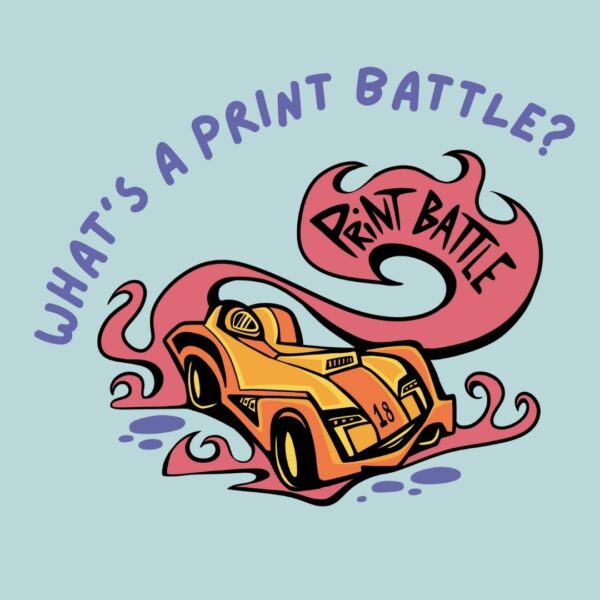Over the weekend, I visited Gamut Gallery in downtown Minneapolis to see Flag Show curated by Lauren Thorson. It was a quiet afternoon, so I spent as much time as I wanted looking at the 23 flags from local and international artists. I even had a tour of their electronic music classroom. The whole experience was normal and wonderful enough, but the problem started when I went to write about the show. As I was writing, I had a dream I was at a poetry reading. It was the most awesome, the funniest poetry reading I have ever been to, and I had to drop everything I had already written to write about it here. When I woke to rain blowing in the windows, I could no longer remember what had been so awesome, and attempting to decipher my notes led nowhere. The dream has stuck with me over the past few days, lingering in the back of my mind, tempting me with the promise of some deeper meaning between the reading and the flag show.
As much as I dug for that meaning, the promise is empty. There is not any deeper meaning to the dream; the dream reading is exactly that. Its lingering around the edges, however, has made me think more deeply about memorable dreams, the ones that wake you with wonder or fright or joy or confusion. They are the dreams we want to tell everyone about, the dreams full of awesome poetry readings and killer parties thrown by Samuel Beckett. They leave us in the morning feeling the vast difference between dreaming and waking life, and they leave us thankful for both.
My favorite dreams these days are the ones closer to life, the walks down familiar streets, the supermarket with fluorescent lights. In the morning, they are clearly dreams too, but I wake to contemplation instead of surprise or relief. Those closer to life dreams linger in my brain longer, maybe because they are easier to remember, maybe because they blur the line between my waking and dreaming lives. The flashier dreams make more of an immediate impact, but the normal dreams burn much longer and slower.
Flags are meant to be visible and memorable, to represent some message, some place, someone. The artists in Flag Show use flags to call attention to the reality and complexity of waking life. Adam Setala’s I Promise To Not Kill You layers visual and textual cues to confuse who is safe from whom. Brian Walbergh’s White Flag for Misplaced Teenage Angst #1 and #2 carry the weight of personal and societal histories in their visibly heavy denim. Lea Devon Sorrentino questions the differences between long-distance and digital communication with #Semaphore.
Other flags in the show leave me with questions, ask me to look harder at what I assume is objective reality. Maison Nue’s NEMO is the unreachable (vacuum sealed) flag of the unreachable Nemo Point. Michael David Franklin’s beautiful, Christine Jorgensen inspired I Don’t Need the Opinions of Others, I Have My Own was so large it was hung over the door, blowing in the air conditioning. It was hidden until after I saw the rest of the flags, and it is the flag that continues to unfold questions in the corners of my mind.
Long after I have left the gallery, I am still wondering: how do flags represent our public and private lives; how do flags shape the future; how else do we lay claim to imagined places; what would NAVA think; does the dream supermarket contain products I can use in waking life?
- From the Road: Present Absence - June 21, 2016
- The Realism of Our Time - April 19, 2016
- All Hands - February 16, 2016










